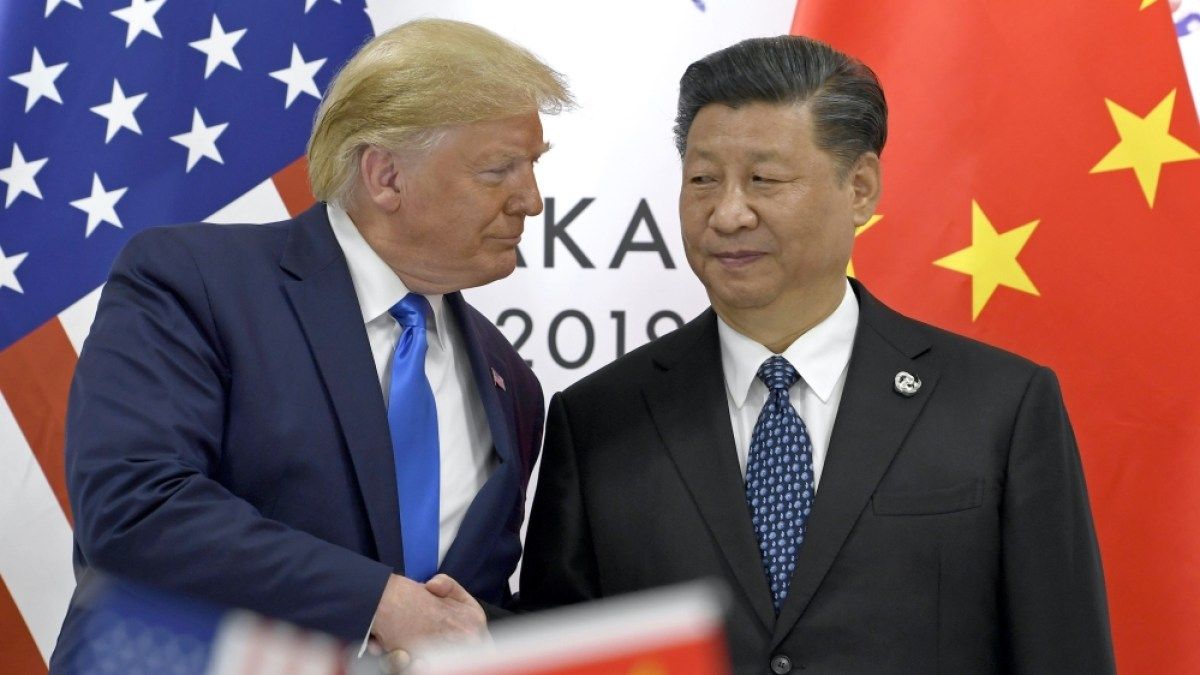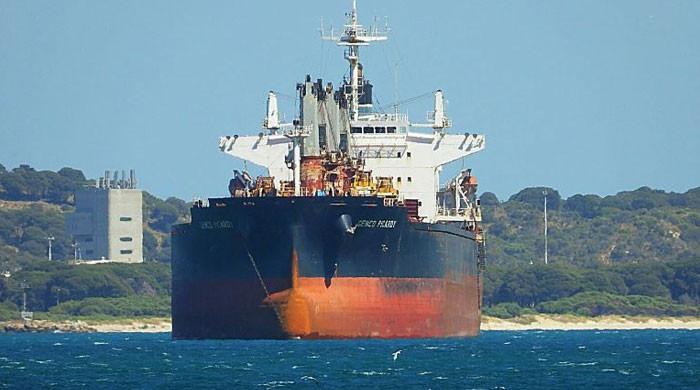The president of the United States, Donald Trump, has presented his long -awaited “reciprocal” tariff plan, in a movement that sent the financial markets staggering in the midst of the growing fears of a global commercial war.
On Wednesday, Trump announced a “minimum reference rate” of 10 percent in almost all imports to the United States. The highest tasks in specific countries will be eliminated in stages shortly after.
He affirmed that the new import taxes were designed to reduce commercial deficits and return foreign manufacturing to the US coast. He also said they would pave the way for future tax cuts.
When Trump pointed to a global commercial system, he said “started” from the United States, his tariffs caused an immediate reaction, with some of the largest commercial partners in the United States who promised countermeasures.
What was announced?
Invoking the International Law of Emergency Economic Powers of 1977, Trump announced a 10 percent rate over all countries, scheduled to enter into force on April 5.
Then, he revealed that there would be “individualized” tariffs for countries that have large commercial surpluses with the United States or impose higher tariffs on US imports. Those rates would come into force four days later, on April 9.
Trump explained that his team calculated the “individualized” tariffs by taking half of what he said that these countries accused the United States for their exports.
As such, the European Union is aimed at tariffs of 20 percent, while the United Kingdom has been slapped with a 10 percent tax.
Meanwhile, China had been assigned 34 percent, in addition to the tariffs of 20 percent that Trump had already imposed on Chinese imports since he reached the position on January 20. Vietnam will be tariffed with 46 percent and Thailand 36 percent.
Mexico and Canada, the two largest commercial partners in the USA and their immediate neighbors, were missing in the list, but both already face 25 percent tariffs for all exports to the US.
Reciprocal tariffs will not apply to some goods such as copper, semiconductors, energy and “certain minerals that are not available in the United States,” according to an informative sheet of the White House.
Reciprocal rates may also be subject to changes. According to the White House document, tariffs can be negotiated with commercial partners who “take significant measures to remedy unrecognized trade agreements.”
What did Trump say?
“For decades, our country has been looted, looted, raped and looted by near and distant nations, both friends and enemies,” Trump told a manufacturing workers audience, cabinet members and journalists.
“Foreign leaders have stolen our works. Foreign cheats have looted our factories. And foreign scavengers have destroyed our American dream that was once the beautiful.”
But he proclaimed that on Wednesday he would mark a turning point in the history of the United States, marking the end of the “vicious attacks” that said the country had resisted.
“On April 2, 2025, it will be remembered forever as the day when the US industry was reborn, the day when the destination of the United States was recovered,” Trump said.
“We will charge approximately half of what they are, and they have been charging us. Then, the tariffs will not be a complete reciprocal,” Trump said.
“I could have done that, I suppose, but it would have been difficult for many countries. We didn't want to do that,” he added.
What have the countries said target in response?
A few minutes after Trump's announcement, world leaders began to report rates as harmful.
From China The Ministry of Commerce promised “countermeasures to safeguard their own rights and interests” in response to the “intimidation” of us, he said in a statement. American tariffs about China now have 54 percent.
Although Beijing did not stop to say that it would impose the countermeasures of retaliation, the statement said that “the United States has attracted the so -called” reciprocal rates “based on subjective and unilateral evaluations, which is inconsistent with the rules of international trade.”
He urged the Trump administration to cancel tariffs and “properly resolve differences with their commercial partners through the same dialogue.”
For once, Beijing and Taipei seemed to be on the same page.
Taiwan tagged like “highly unreasonable” tariffs. The cabinet spokeswoman, Michelle Lee, said Taipei “deeply lamented” Trump's announcement of a 32 percent tariff on his exports.
Australian Prime Minister Anthony Albanese said the tariffs “were not the act of a friend” and “totally unjustified.”
European Commission President Ursula von der Leyen, responding to a new rate of 20 percent on the EU, described the measure as a “great blow to the world economy.”
“The consequences will be serious for millions of people around the world,” he said, adding groceries, transport and medicine will cost more.
Even CanadaThat he was exempt from the last rates, he intervened.
“During this crisis, we must act with a purpose,” wrote Canadian Prime Minister Mark Carney on social networks. “My government will fight against US tariffs,” he said.
What countries will return their own measures?
As reciprocal tariffs are not activated until April 9, countries have six days to try to reach an agreement with the Trump team. But some can respond with retaliation rates.
Canada He is one of several US business partners who has pledged to respond to tariffs with retaliation measures.
Meanwhile, the European Union He is “ready for a commercial war” with the United States and could “attack online services,” said French government spokeswoman Sophie Primas.
She said the EU was preparing a two -stage refutation, with “an initial response”, which will be placed around mid -April, with respect to aluminum and steel.
Then, the EU will also go to “all products and services”, with the measures probably ready at the end of April, said premiums, adding that this was still being discussed.
“China will probably launch some kind of retaliation …”, said Nick Marro, a main economist of the Economist Intelligence Unit to Al Jazeera.
What countries will probably prefer diplomacy?
MexicoMeanwhile, it has been turned. On Wednesday, Mexican president Claudia Sheinbaum said she would avoid pursuing “Tit-For-OT” tariffs.
Similarly, British Prime Minister Keir Starmer has ruled out immediate reprisals, promising on Thursday maintaining a “cold head … in the next few days.”
Business Secretary Jonathan Reynolds told the House of the Commons on Thursday that Westminster is in conversations with Washington to ensure an agreement destined to avoid or reduce the United Kingdom rates.
Also in Asia, few countries would be willing to face Trump and risk more reprisals, Marro said.
In addition to China, “many other Asian markets are not really in a position to take reprisals,” due to the “importance of the United States as a source of final demand,” he said.
Dario Perkins, managing director of TS Lombard, a financial research firm based in London, agreed widely and said that most countries will favor “other policy levers” on retaliation rates.
“I think the central banks will relieve monetary policy [by lowering interest rates to try and boost growth]”Perkins told Al Jazeera.
Even so, he said that “global trade will be much weaker and that international supply chains will be shortened. The multilateral era is dying.”
How have the markets responded?
From the United States to Asia, the markets fell as investors prepared for a stronger turn towards protectionism for the world's largest economy since the 1930s.
The Dow Jones Industrial Avenge lost 2.6 percent on Wednesday, predicting short -term losses for US companies.
The German Dax index fell 1.7 percent on Thursday, while CAC 40 in Paris threw 1.8 percent. The FTSE 100 of Great Britain lost 1.2 percent.
In Asian trade, Tokyo's Nikkei 225 index immersed himself in 4 percent briefly on Thursday, with car manufacturers and banks receiving great successes.
As the global actions fell, investors rushed to buy gold, a traditional secure refuge asset during market volatility periods.
The precious metal reached a record of $ 3,167.84 per ounce (28.3 g) on Thursday, before a little earnings are obtained.
Market actors are concerned about the dismantling of international supply chains and the effects of inflation and even recession, especially in the United States.
Goldman Sachs recently raised his estimate for the probability of a recession of the United States during the next 12 months to 35 percent, compared to 20 percent before.
Ubs Bank distributed a note on Thursday, saying: “It is the real GDP of the USA. [in 2025] It could be compromised in 1.5-2 percent and inflation could increase to about 5 percent if these rates are not invested soon. ”












